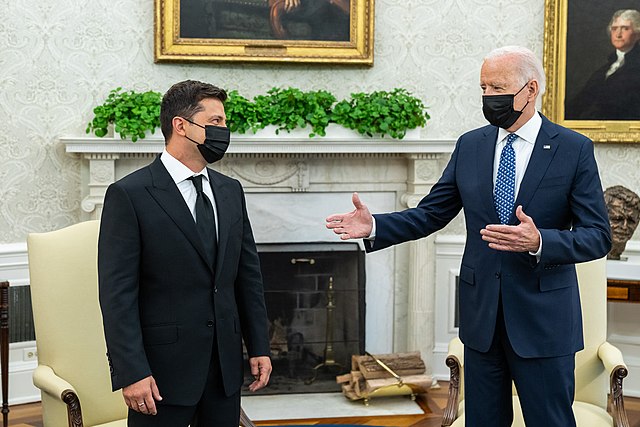WASHINGTON – With a government shutdown looking increasingly likely, Congress has yet to offer up a new funding package to aid Ukraine in its ongoing war against Russia as new House speaker Rep. Mike Johnson (R-La.) has insisted on separating Ukraine aid from a package requested by President Joe Biden meant to help that country and Israel.
However, the Biden administration has been able to continue supplying Ukraine with weapons and munitions even without new aid through a lesser-known executive power called the Presidential Drawdown Authority, or PDA. Biden invoked drawdown authority twice in October alone after House Republicans refused to include funding for Ukraine in a continuing resolution signed just hours before the start of the month.
The drawdown authority, first established by the Foreign Assistance Act of 1961, allows the president to send military supplies and services from the Department of Defense to foreign countries in emergency situations.
“The intended purpose was quite different [to today],” said Mark Cancian, a senior adviser at the Center for Strategic and International Studies. “It was a mechanism for sending mostly obsolescent equipment to allies and partners with underdeveloped materials.”
Russia’s invasion of Ukraine in February 2022 has led to regular reliance on the drawdown ability as a means to speed arms to Ukrainian troops.
In May 2022, Congress passed legislation to increase the drawdown authority’s cap to $11 billion for the fiscal year that ended Sept. 30, 2022. That was a major increase from the $100 million that had been allocated each year since the drawdown authority’s establishment. Congress increased the cap to $14.5 billion for the 2023 fiscal year.
The shift in policy, Cancian said, happened because the Biden administration and Congress wanted to have the option to send new, top-of-the-line military equipment directly to Ukraine, rather than through the sales process typically required in a traditional aid package.
According to the Congressional Research Service and Defense Department data, the Biden administration has used the drawdown authority 50 times since August 2021, authorizing around $25.2 billion worth of military assistance to Ukraine.
Until a new aid package is approved, the drawdown authority remains one of the few ways the U.S. can provide continued military assistance to Ukraine without Congress’s specific approval. Ukrainian officials and policy experts, however, note that the authority itself will likely not be enough to help Ukraine beat Russia.
Oksana Markarova, Ukraine’s ambassador to the U.S., told reporters at a journalism conference in late October that Ukraine is unable to purchase or order new military equipment from the U.S. and is therefore reliant on the drawdown authority. But, she added Ukraine will require further aid from the U.S. to beat Russia.
“If we don’t get the support, it’s just a matter of time until Russia starts winning,” she told reporters.
Relief for Ukraine could come in the form of the supplementary aid request the Biden administration has asked Congress to consider. Of the $106 billion requested by the White House, $60.1 billion would go toward supporting Ukraine’s war effort. The intended aid would fund Ukraine’s war effort through the winter, Defense Secretary Lloyd Austin said at a Senate hearing last month.
While the Senate, controlled by Democratic lawmakers, is considering a dual-support package, the Republican-led House passed $14 billion in aid for just Israel last week. The Senate will not consider the legislation, Democratic leaders have said.
“Ukraine will come in short order. It will come next,” House Speaker Johnson said during a news conference last week with Republican leaders. “We want to pair border security with Ukraine because I think we can get bipartisan agreement on both of those matters.”
Cancian said it is unlikely that Congress will decrease the drawdown authority’s existing cap because it represents “purely military” transfers rather than allotting new monetary aid.
“Now that Congress has discovered PDA, I think they may be inclined to use it more frequently,” he said.


